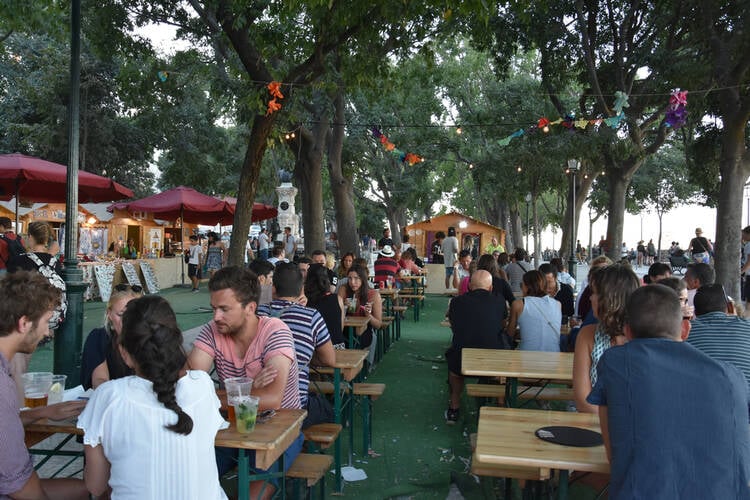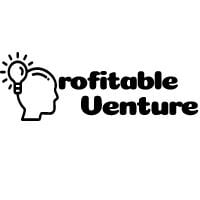
Starting a beer garden business requires capital, and the amount you will need to launch can range from $150,000 to $500,000, depending on your location, size, and design.
This is because a beer garden business typically involves securing a suitable property, acquiring licenses, setting up kitchen and bar equipment, designing indoor/outdoor seating, and purchasing inventory.
Other costs may include branding, hiring staff, marketing, and outdoor fixtures such as lighting, shade structures, and landscaping.
No doubt that there are key factors that can influence how much you should budget when planning to open a beer garden.
These include whether you are buying or leasing a location, the type of alcohol and food you intend to serve, the entertainment setup, and whether your space is seasonal or open year-round.
In this article, we will explore these cost-driving factors in detail to help you estimate your startup budget more accurately.
Factors That Influence the Cost of Opening a Beer Garden Business
-
Location and Property Costs
Urban areas or prime downtown locations typically demand higher rents or purchase prices compared to suburban or rural settings.
In addition, you must consider zoning laws, noise regulations, and parking requirements, which can impact where you can legally operate.
If you’re leasing, expect to pay deposits and multi-month commitments. If buying, include mortgage, taxes, and insurance in your budget.
The more accessible and visible your location, the higher the cost—but also the greater the foot traffic potential.
-
Size and Seating Capacity
Larger spaces require more furniture, more staff, and more utilities, as well as a bigger kitchen or prep area.
You will also need to invest in ADA-compliant walkways and restrooms if your seating exceeds a certain threshold.
Whether you’re planning for 50 or 250 guests at once will determine your layout, safety compliance needs, and upfront infrastructure expenses.
Bigger spaces often mean more revenue potential, but they also carry higher operational and maintenance costs.
-
Licensing and Permits
Obtaining the necessary licenses and permits is both mandatory and costly.
These include a liquor license, food service licenses, outdoor seating permits, and possibly live entertainment permissions.
You may also need fire inspections, building code compliance checks, and business registration fees.
Navigating these legal requirements often involves consulting professionals or hiring licensing agents, which adds to your expenses.
Delays or denials can affect your opening timeline, so it is important to factor in both the cost and timing of permits.
-
Design and Build-Out
Whether you are renovating an existing space or building from scratch, the design and construction of your beer garden will likely take a large portion of your budget.
This includes flooring, plumbing, electrical work, custom bar construction, kitchen build-out, outdoor patios, fencing, and decor.
Depending on your theme or branding, design choices may range from minimalist rustic to high-end industrial chic.
Hiring architects, interior designers, or general contractors will add to your costs, as will the need for landscaping or hardscaping.
A well-executed build-out enhances customer experience but requires a detailed budget to avoid overruns.
-
Furniture and Fixtures
Furnishing your beer garden involves more than just tables and chairs. You will need bar stools, benches, picnic tables, patio umbrellas, shade structures, planters, heaters for cooler months, and lighting, both functional and ambient.
If you’re aiming for a specific aesthetic, such as vintage or Bavarian-style, expect to pay extra for custom or themed pieces. Fixtures like mounted TVs, taps, signage, and menu boards also add up.
Choosing high-quality, weather-resistant furniture is essential for longevity, especially for outdoor settings, which means the upfront cost may be high, but it prevents frequent replacement and maintenance.
-
Kitchen and Bar Equipment
Your menu determines how extensive your kitchen setup must be. At a minimum, you will need refrigeration, prep tables, dishwashing stations, and cooking equipment like grills, fryers, or ovens.
On the bar side, kegerators, beer taps, coolers, ice machines, glassware, and point-of-sale (POS) systems are essential.
If you are serving craft or specialty drinks, you might need cocktail shakers, specialty glassware, or blending tools.
Energy-efficient and commercial-grade equipment is expensive but necessary for high-volume service.
Equipment leasing is an option, but it may cost more long term. All of these choices influence your initial capital outlay.
-
Staffing and Training
You will need to hire a team of bartenders, kitchen staff, servers, security (if required), and possibly cleaning personnel.
Salaries, benefits, uniforms, and pre-opening training programs add to your startup budget.
In a competitive labor market, attracting skilled employees may mean offering higher wages or incentives.
You may also need to pay for training in areas like alcohol service safety, food handling, or point-of-sale software.
Your staffing needs will depend on your opening hours, expected customer flow, and complexity of operations. Budgeting for 2-3 months of payroll before profits stabilize is wise.
-
Inventory and Supplies
Stocking your initial inventory of food, beverages, and operational supplies will require a substantial investment.
This includes a variety of beers (draft and bottled), liquors, mixers, non-alcoholic beverages, snacks, ingredients for your food menu, cleaning products, disposable items (napkins, straws, to-go containers), and more.
You may also need to pre-order seasonal or specialty beers in bulk. Keep in mind that your first inventory purchase is usually the most expensive because you’re building from zero.
-
Marketing and Branding
Effective marketing is essential to attract patrons and build your brand. You will need a professionally designed logo, signage, menus, and possibly merchandise like branded mugs or t-shirts.
Your launch campaign might include social media ads, influencer partnerships, public relations, and printed flyers.
Setting up a website, email list, and SEO strategy incurs additional costs. While some marketing can be done in-house, hiring professionals often yields better results.
A strong initial marketing push can mean the difference between a packed opening and a slow start.
-
Entertainment and Amenities
Many successful beer gardens offer live music, trivia nights, outdoor games (like cornhole or giant Jenga), or big-screen sports viewing.
To provide these experiences, you may need a small stage, sound system, projector screens, licenses for music or broadcasts, and durable game equipment.
These amenities elevate the customer experience and encourage longer stays, but they come at a cost.
You might also install extras like fire pits, misting fans, or kid-friendly play areas, depending on your concept.
These features help differentiate your venue from competitors and influence your overall startup investment.
